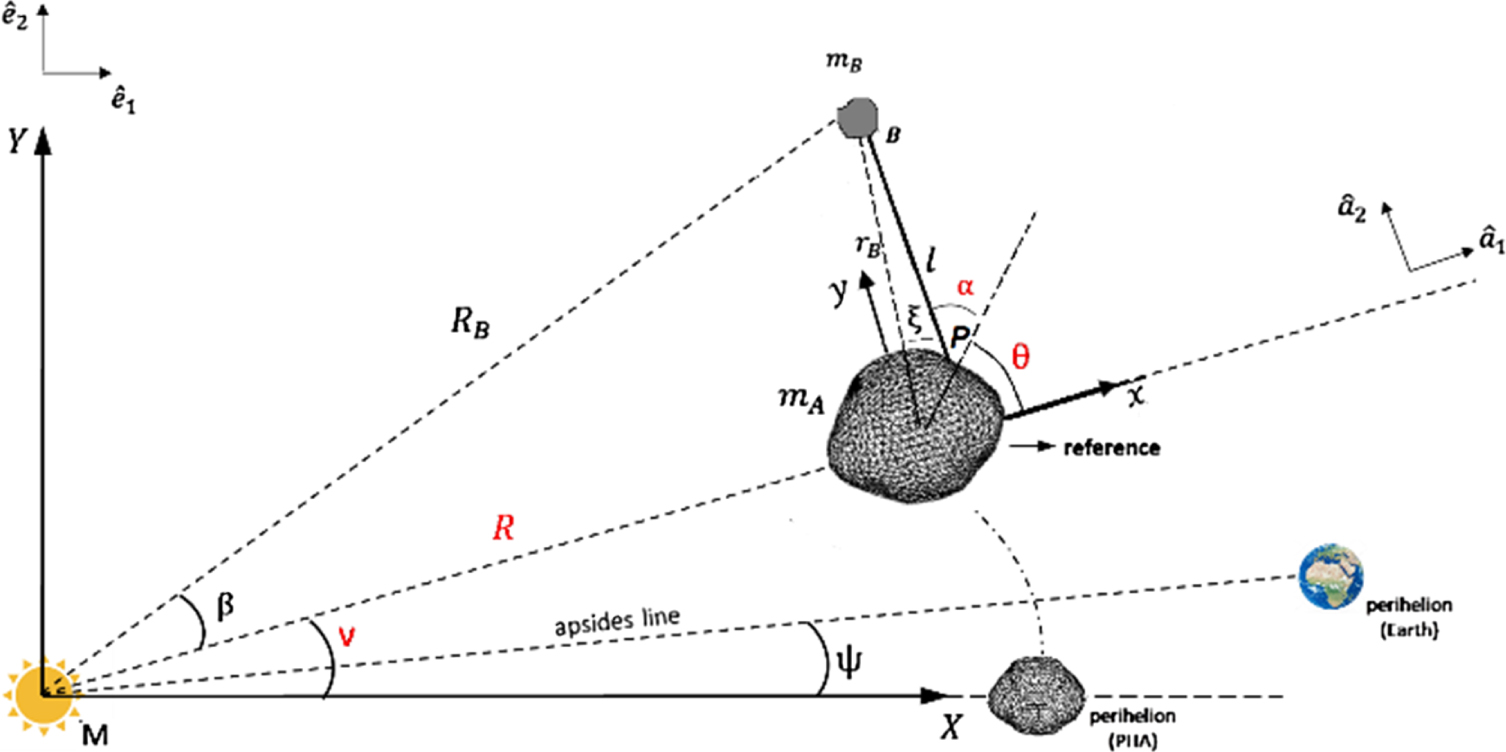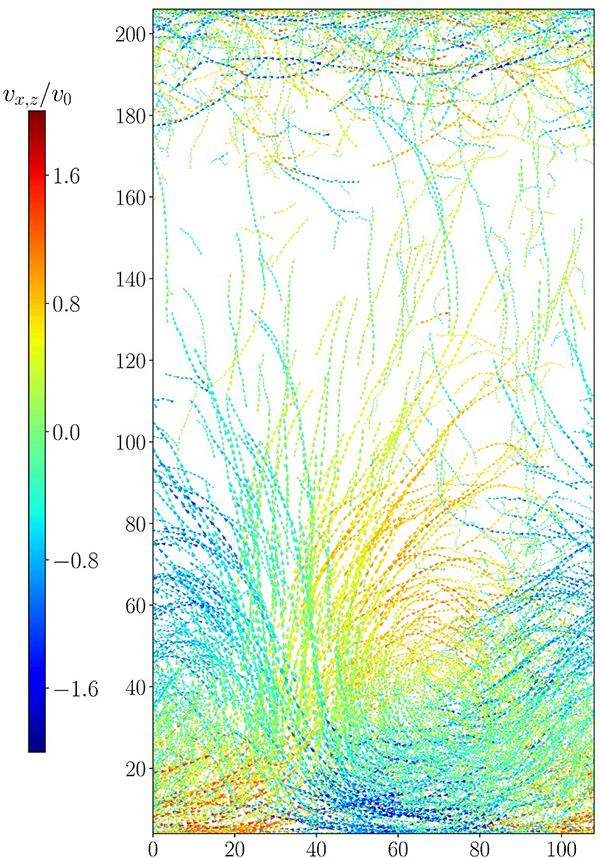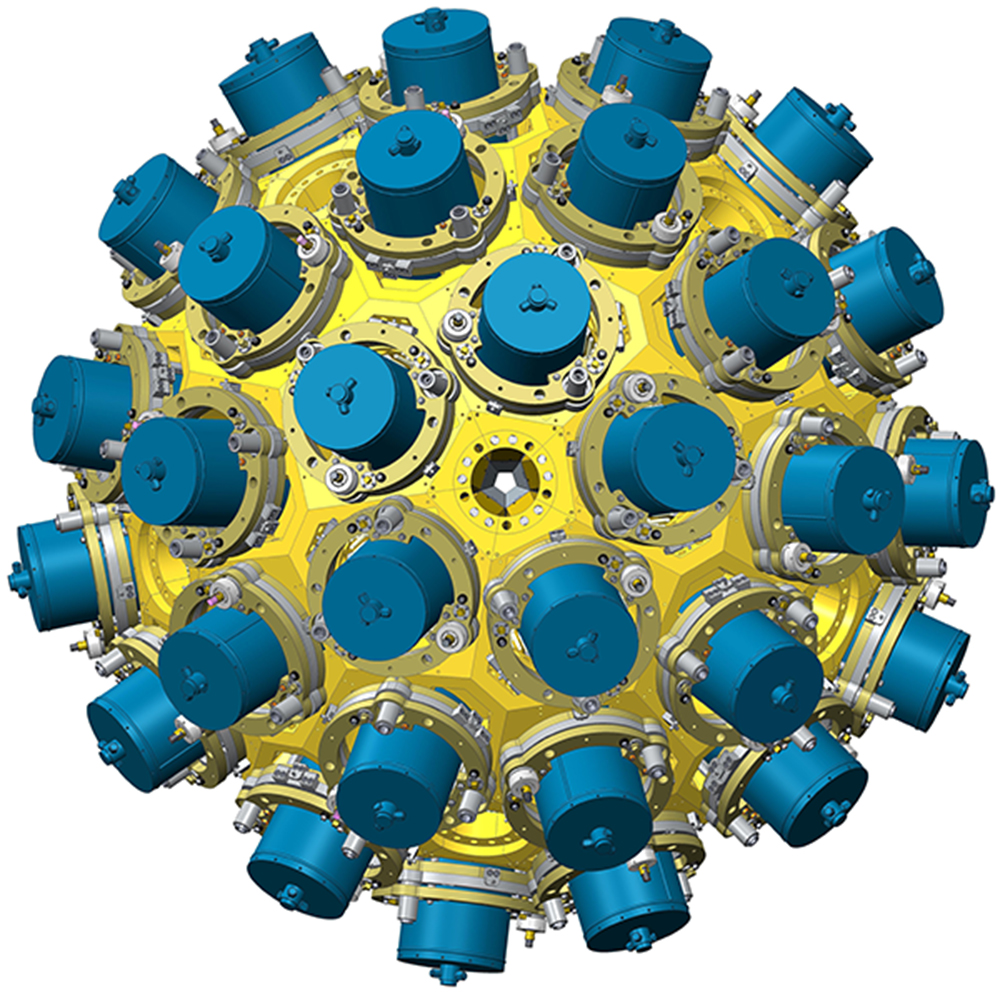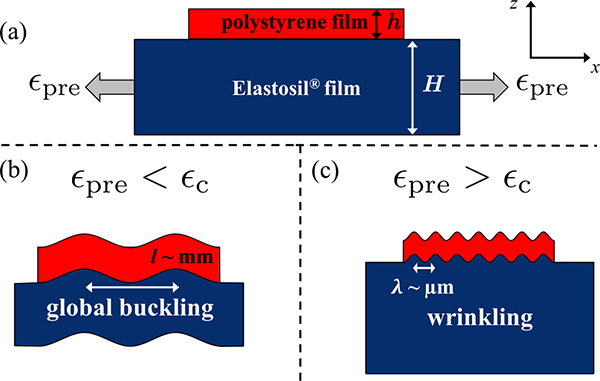News
EPJ ST Highlight - Protecting Earth from asteroid impact with a tethered diversion
- Details
- Published on 29 May 2020

The use of a tether assisted system could prevent an asteroid impacting Earth without the risk of fragmentation.
Our planet exists within the vicinity of thousands of Near-Earth Objects (NEOs), some of which – Potentially Hazardous Asteroids (PHAs) – carry the risk of impacting Earth causing major damage to infrastructure and loss of life. Methods to mitigate such a collision are highly desirable. A new paper published in EPJ Special Topics, authored by Flaviane Venditti, Planetary Radar Department, Arecibo Observatory, University of Central Florida, Arecibo, suggests the use of a tether assisted system to prevent PHA impact.
EPJ E Highlight - ‘Bottom-heavy squirmers’ adopt characteristic group behaviours
- Details
- Published on 26 May 2020

Simulated particles which mimic the behaviours of self-propelling microorganisms have distinct collective properties which depend on their velocities and bottom-heaviness.
From starling aberrations to self-turbulent fluids, ‘active systems’ encompass a wide family of phenomena in which individual objects propel themselves forward, allowing them to display intriguing collective behaviours. On microscopic scales, they are found in groups of living organisms which move around by squirming, and are aligned with Earth’s gravitational fields due to their bottom-heavy mass distributions. Through research published in EPJ E, Felix Rühle and Holger Stark at the Technical University of Berlin find that depending on their properties, these objects collectively spend most of their time in one of two states, between which some intriguing behaviours can emerge.
EPJ A Highlight - Advancing AGATA – Future Science with The Advanced Gamma Tracking Array
- Details
- Published on 19 May 2020

AGATA – the Advanced Gamma Tracking Array is a multi-national European project for the ultimate high-resolution gamma-ray spectrometer for nuclear physics capable of measuring γ rays from a few tens of keV to beyond 10 MeV, with unprecedented efficiency, excellent position resolution for individual γ-ray interactions and correspondingly unparalleled angular resolution, and very high count-rate capability. AGATA will be a flag ship spectrometer and have an enormous impact on nuclear structure studies at the extremes of isospin, mass, angular momentum, excitation energy and temperature. It will enable us to uncover and understand hitherto hidden secrets of the atomic nucleus.
EPJ D Highlight - Stresses and flows in ultra-cold superfluids
- Details
- Published on 08 May 2020

Mathematical modelling of superfluids, which exhibit quantum mechanical properties at a macroscopic scale, shows that they become deformed when flowing around impurities.
Superfluids, which form only at temperatures close to absolute zero, have unique and in some ways bizarre mechanical properties, Yvan Buggy of the Institute of Photonics and Quantum Sciences at Heriot-Watt University in Edinburgh, Scotland, and his co-workers have developed a new quantum mechanical model of some of these properties, which illustrates how these fluids will deform as they flow around impurities. This work is published in the journal EPJ D.
EPJ D Topical review - Recent total cross section measurements in electron scattering from molecules
- Details
- Published on 05 May 2020

Accurate new experimental data on electron interactions with matter are necessary for the understanding of a wide variety of natural and technological processes occurring in complex environments. Knowledge of the efficiency of electron interactions with biomolecules is crucial for the description and modeling of ionizing radiation damage to living cells and biomolecules radiolysis. Accurate experimental data concerning electron interactions are also important for the description of many phenomena occurring in plasma physics and gaseous electronics, including modeling of processes in cometary and planetary atmospheres.
EPJ Plus Highlight - Mathematical curves predict evolution in Covid-19 spread
- Details
- Published on 23 April 2020

With the right approach, statistics can be used to reliably track the growth and fall in daily new cases of Covid-19 in China, raising hopes that similar approaches could more accurately predict the spread of the virus in other nations.
Efforts to contain the spread of the Covid-19 pandemic are now the top priority of governments across the globe. As they make these life-saving decisions, it is particularly crucial for policymakers to accurately predict how the spread of the virus will change over time. Through research published in EPJ Plus, Ignazio Ciufolini at the University of Salento, and Antonio Paolozzi at Sapienza University of Rome, identify a clear mathematical trend in the evolution of daily new cases and death numbers in China, and use the same curve to predict how a similar slowdown will unfold in Italy.
EPJ B Colloquium - Ergodicity and large deviations in physical systems with stochastic dynamics
- Details
- Published on 22 April 2020

In ergodic physical systems, time-averaged quantities converge (for large times) to their ensemble-averaged values. Large deviation theory describes rare events where these time averages differ significantly from the corresponding ensemble averages. It allows estimation of the probabilities of these events, and their mechanisms, and has been applied to a wide range of physical systems, including exclusion processes, glassy materials, models of heat transport, proteins, climate models, and non-equilibrium quantum systems.
EPJ B Highlight - What protects minority languages from extinction?
- Details
- Published on 21 April 2020

Mathematical modelling of competing languages in a geographical area suggests two scenarios in which one or more minority languages will be more likely to survive.
Over 6,000 languages are currently spoken worldwide, but a substantial minority - well over 5% - are in danger of dying out. It is perhaps surprising that this fraction is no higher, as most models have so far predicted that a minority language will be doomed to extinction once contacts with speakers of the majority language reach a certain level. Statistical physicists Jean-Marc Luck from Université Paris-Saclay, Paris, France and Anita Mehta from the University of Oxford, UK have described, using mathematical modelling, two mechanisms through which this doomsday scenario does not occur, i.e. several languages come to coexist in the same area. This work is now published in EPJ B.
EPJ E Highlight - Modelling wrinkling and buckling in materials that form the basis of flexible electronics
- Details
- Published on 20 April 2020

As the demand for flexible electronics grows, researchers must develop robust models of how the materials that comprise them behave under stress.
Flexible circuits have become a highly desirable commodity in modern technology, with applications in biotechnology, electronics, monitors and screens, being of particular importance. A new paper authored by John F. Niven, Department of Physics & Astronomy, McMaster University, Hamilton, Ontario, published in EPJ E, aims to understand how materials used in flexible electronics behave under stress and strain, particularly, how they wrinkle and buckle.
EPJ D Highlight - Questionable stability of dissipative topological models for classical and quantum systems
- Details
- Published on 15 April 2020

Physicists Rebekka Koch and Jan Carl Budich make important contributions to understanding dissipative topological systems by studying the spectral instabilities that occur in the mathematical description and their effect on experimental setups in a new paper in EPJ D.
Energy conservation lies at the core of every physical theory. Effective mathematical models however can feature energy gain and/or loss and thus break the energy conservation law by only capturing the physics of a subsystem. As a result, the Hamiltonian, the function that describes the system's energy, loses an important mathematical property: it is no longer Hermitian. Such non-Hermitian Hamiltonians have successfully described experimental setups for both classical problems – in e.g. some optical systems and electrical circuits - and quantum ones, in modelling the motion of electrons in crystalline solids. In a new paper in EPJ D, physicists Rebekka Koch from the University of Amsterdam in the Netherlands and Jan Carl Budich from Technische Universität Dresden, in Germany, describe how these functions provide new insights into behaviour at the edges of topological materials.




